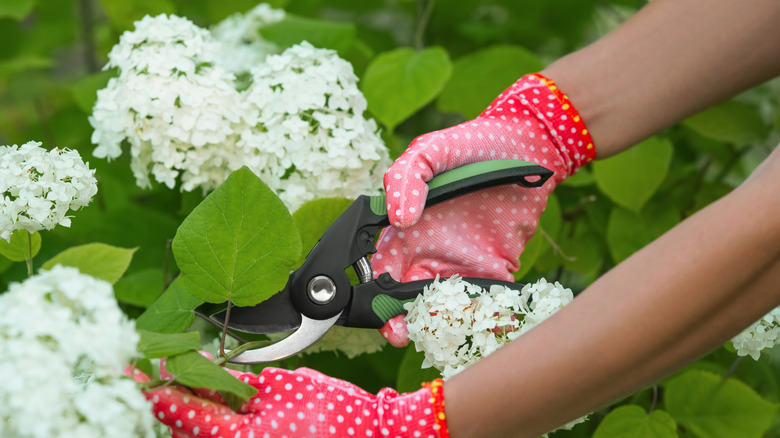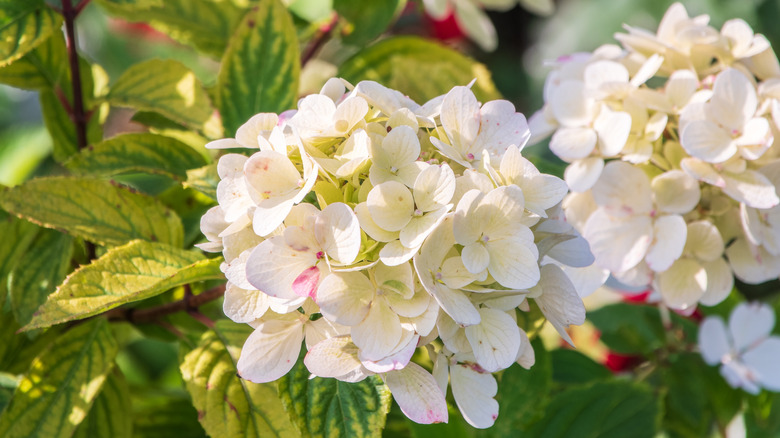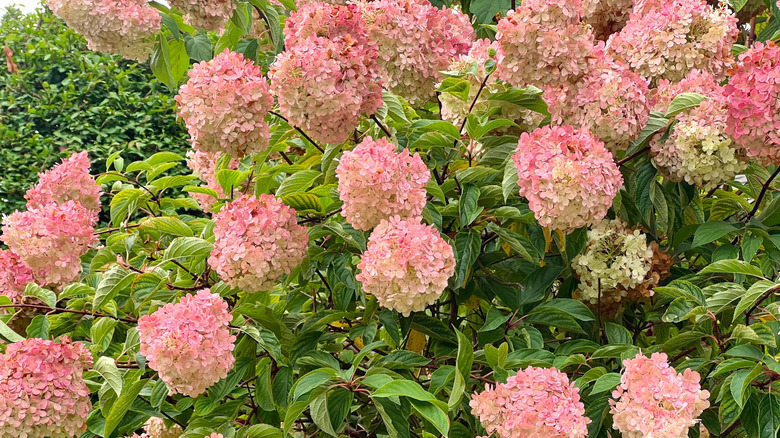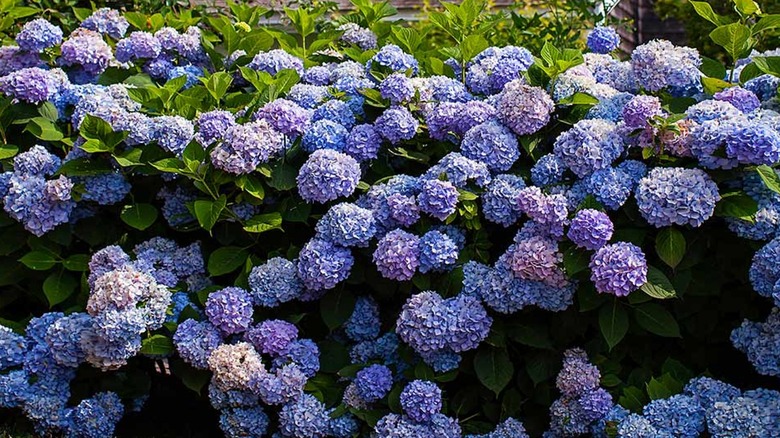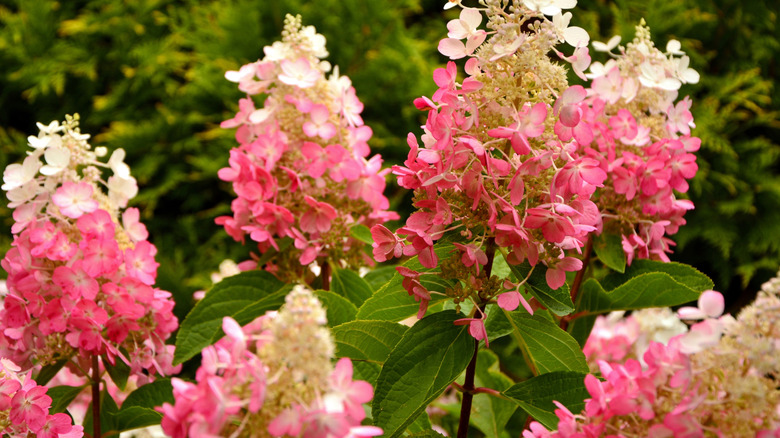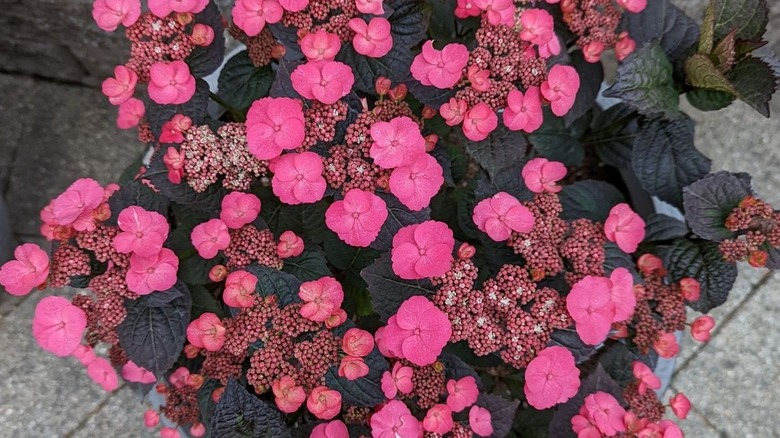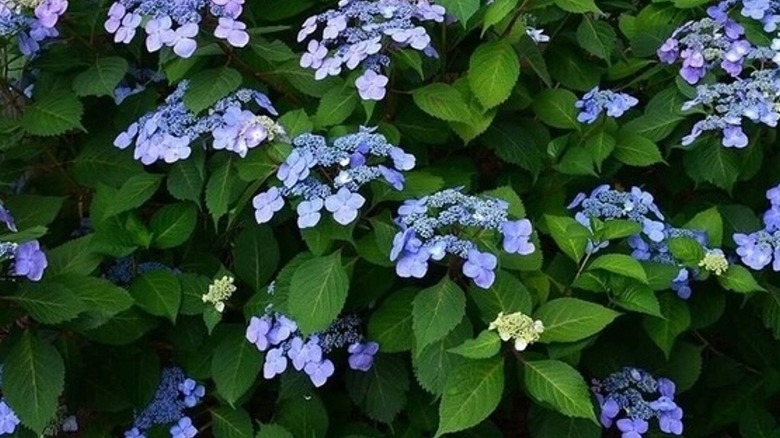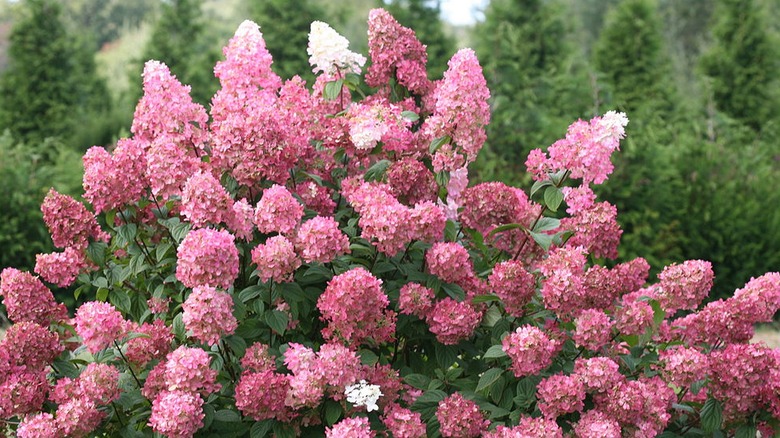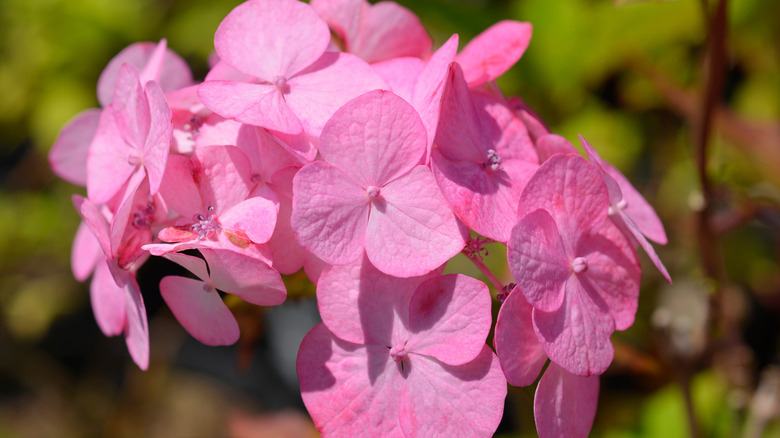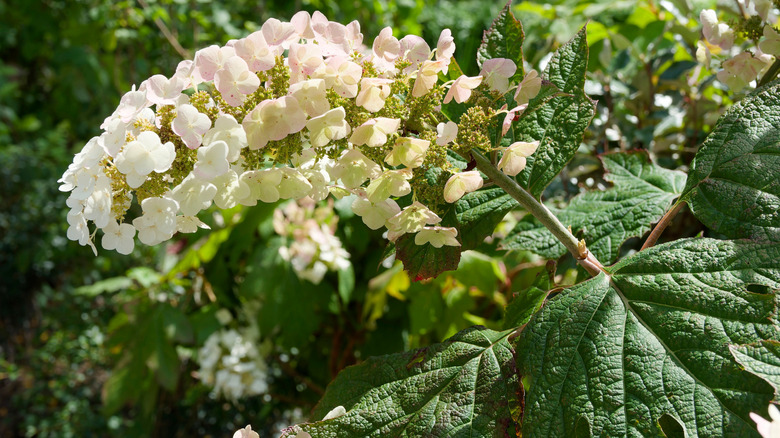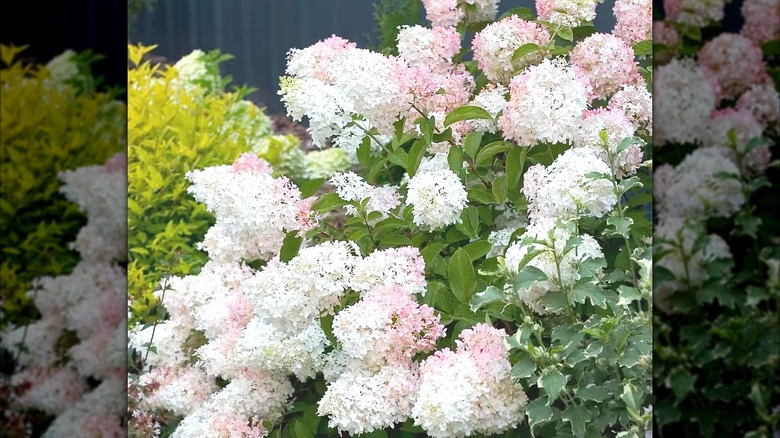10 Hydrangea Varieties You Should Always Prune In Spring For Thriving Summer Blooms
Hydrangeas are beloved landscape plants thanks to their colorful flower heads, lush foliage, and wide, eye-catching spreads. But if you want to get them to thrive in all their glory, they must be pruned. Cutting them at the wrong time can mean the difference between having blooming hydrangeas and being left with just foliage for another year. Fortunately, the most popular hydrangea varieties bloom on new wood, making them the perfect candidates for spring pruning to turn into absolute showstoppers throughout the summer.
New wood hydrangeas require the current season's growth to create dazzling blooms, unlike old wood hydrangeas pruned in the fall. Spring-pruned hydrangeas are some of the most forgiving and reliable options. They can safely be pruned to control their size, shape, or to remove dead parts — without jeopardizing the summer show.
Smooth hydrangeas (Hydrangea arborescens), like the "Annabelle," need the most pruning in March. These types are known for their gigantic, round blooms even in colder climates. Because they flower on new wood, pruning them back in early spring helps stimulate new growth and bigger blooms. On the other hand, panicle hydrangeas (Hydrangea paniculata), which include showy blooms like "Pinky Winky®" and "Phantom," require much less maintenance and pruning in the spring. Other hydrangeas, like those in the "Endless Summer®" series, are considered hybrid and can bloom on old and new wood. So, if you're thinking of adding these beautiful plants to your landscape, these spring pruning contestants will make your yard the floral-packed all summer.
Annabelle hydrangeas
Looking for a powerhouse hydrangea that positively dazzles? Annabelle smooth hydrangeas (Hydrangea arborescens 'Annabelle') are a new wood bloomer, producing round white blooms that are showy and hardiest in USDA zones 3 through 9. As the blooms age, they turn a jade green hue, but throughout the entire summer season, you'll have pretty white flowers that look like softballs for making gorgeous borders and hedges.
Vanilla strawberry hydrangeas
For USDA hardiness zones 4 through 8, the vanilla strawberry panicle hydrangea (Hydrangea paniculata 'Renhy') is a stunning, sun-loving shrub that brings a dramatic splash of color to summer gardens. This easy-going plant is known for its colorful clusters, which start the season with creamy white blooms that gradually blush to soft pink and deepen into rich strawberry-red by the end. It blooms on new wood, so pruning in early spring encourages an abundance of flowers.
Endless Summer® hydrangeas
The Endless Summer® bigleaf hydrangea (Hydrangea macrophylla 'Bailmer') is a revolutionary variety that blooms on old and new wood, offering a long flowering season from late spring through fall. Its large, mophead blooms can shift from vivid blue to rich pink, depending on your soil's pH, and can grow up to 4 feet in hardiness zones 4 through 9. To get it going strong, remove any dead parts and prune it lightly in early spring.
Pinky Winky® hydrangeas
The showy Pinky Winky® hydrangeas (Hydrangea paniculata 'Pinky Winky) are a bold panicle hydrangea, featuring two-toned, cone-shaped blooms that make a really big statement in any yard. Each flower cluster starts creamy white, then gradually changes from the base up to a deep rosy-pink. It will sometimes show both colors at once, giving it that signature "pinky winky" vibe. This upright grower can reach up to 12 feet high and is the hardiest in zones 3 through 8.
Pink Dynamo® hydrangeas
The Pink Dynamo® mountain hydrangea (Hydrangea serrata 'Pink Dynamo') closely resembles bigleaf hydrangeas in that it thrives in zones 5-9 and grows up to 3 feet. However, mountain hydrangeas can also adapt to colder climates. It has dark green and black-ish leaves that dance around underneath its mesmerizing pink lacecap blooms. This hydrangea type prefers a more acidic soil and should be pruned in early spring for more blooms by summer.
Twist-and-Shout® hydrangeas
The Twist-and-Shout® bigleaf hydrangea (Hydrangea macrophylla 'P11HM-I') is part of the Endless Summer® group of hydrangeas. This versatile compact shrub blooms on old and new wood and can live up to 20 years in hardiness zones 4 through 9. Once mature, they can grow between 3 and 4 feet, making them perfect as thrillers in the 3 part formula you should use when designing a container garden.
Fire Light® hydrangeas
The Fire Light® panicle hydrangea (Hydrangea paniculata 'Fire Light') is known for its dramatic color transition and strong ability to thrive in a wide range of conditions. Its large, cone-shaped clusters start as creamy white in midsummer, then will deepen into a rich pink to reddish tone as the summer continues. This hydrangea is hardiest in zones 3 through 9.
Tea of Heaven hydrangeas
The Tea of Heaven mountain hydrangea (Hydrangea serrata 'Tea of Heaven') is a delicate variety adored for its refined beauty. It features lacecap flowers with soft blue to lavender-pink florets that are hardiest in zones 6 to 9, and should be pruned in early spring to remove damaged stems. Depending on the type of soil, you can expect pink (alkaline soils) or blue (acid soils) blooms. You can measure the pH of your soil so you're not disappointed in the color.
Alice hydrangeas
Alice oakleaf hydrangeas (Hydrangea quercifolia 'Alice') are one of the largest types of oakleaf, reaching up to 10 feet at maturity with white, cone-shaped clusters and textured oak-like foliage. Although Alice thrives in zones 5 through 9 and blooms on old wood, you should remove damaged stems in early spring or right after blooming if it needs it in the spring and summer. The flowers will gradually fade to soft pink or tan as the summer continues.
Phantom hydrangeas
The showstopping Phantom panicle hydrangea (Hydrangea paniculata 'Phantom') is an ornamental shrub known for its extra-full, double-petaled pink and white blooms that look like cone-shaped clusters of paper rosettes. Reaching up to 6 feet tall at maturity and blooms on new wood, its lush foliage adds seasonal drama to borders and hedges for hardiness zones 4 through 8, and should be pruned in spring before new growth emerges.
